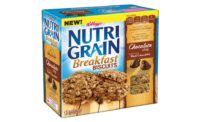Sustaining the 'free-from' wave through safety




According to the January 2015 “Gluten-Free Foods in the U.S., 5th Edition” report from Packaged Facts, Rockville, MD, from 2009–2014, sales of gluten-free products in grain-based categories posted a 34 percent compound annual growth rate (CAGR). When taking in the big picture, that number grows considerably. In November 2014, Mintel, Chicago, estimated gluten-free foods would reach $8.8 billion in 2014, up 63 percent from 2012–14.
The gluten-free boom is far from over, but some safety and quality assurance/quality control ghosts in the gluten-free machine could prevent some companies from fully realizing their profit potential in this market, as well as in the emerging “free-from” trend likely to ride on the coattails of gluten-free’s success.
While recent research into the validity of gluten-free labeling appears promising, it also highlights a longstanding thorn in its side.
In the Feb. 15, 2015, issue of Food Chemistry, Girdhari Sharma, currently a visiting scientist at FDA , et al., published findings related to an FDA study into the presence of gluten in a range of foods in the United States (“Gluten detection in foods available in the United States—a market survey”). The premise was to test foods, via enzyme-linked immunosorbent assays (ELISAs), labeled as gluten-free, as well as foods that lacked gluten-containing ingredients but did not make a gluten-free claim. While only 1.1 percent of foods labeled as gluten-free tested positive for 20 parts per million (ppm) or more gluten (the FDA labeling threshold), 19.4 percent of those without gluten-containing ingredients or gluten-free labeling tested at 20 ppm or higher—and 10.2 of those contained more than 100 ppm of gluten. As might be expected, the researchers found that the presence of oats in the foods strongly correlated with a positive ELISA result.

Even though FDA now has set standards for gluten-free labeling, such labeling isn’t a requirement. And regular followers of a gluten-free diet—dictated by medical diagnosis of celiac disease or for other reasons (often with a perceived connection to health)—regularly seek to expand their range of purchases through careful label reading.
Other studies have yielded varying results. In one, Hyun Jung Lee, et al., found 20.5 percent of tested foods labeled as gluten-free had levels above 20 ppm (“Gluten contamination in foods labeled as ‘gluten-free’ in the United States,” Journal of Food Protection, October 2014). In another, Tricia Thompson, et al., found 5.1 percent of tested foods—including two “certified gluten-free” products—tested at 20 ppm or above (“A comparison of gluten levels in labeled gluten-free and certified gluten-free foods sold in the United States,” European Journal of Clinical Nutrition, October 2014).
Establishing strong food-safety standards that prevent cross-contamination of allergens—and communicating that fact to shoppers—can do much to advantageously position products for those seeking free-from foods, a segment that includes gluten-free, but also eliminates the “big eight” allergens—milk, eggs, fish, crustacean shellfish, tree nuts, peanuts, wheat and soy. Many also add sesame to that list, and generally accepted free-from definitions also include no GMOs, additives or preservatives.
Moves to avoid cross-contamination make strong business sense. In January 2015, USDA-Food Safety Inspection Service (FSIS) reported that recalls were up in 2014, with the bulk related to undeclared allergens.
Companies that take the requisite steps to help prevent cross-contamination of allergens within the supply chain and in the plant will likely find themselves nicely poised to continue serving the still-steady gluten-free market, as well as the emerging free-from crowd.
A perfect example of this control comes from the pizza industry. Although Domino’s offers a gluten-free crust, the company doesn’t make any guarantees regarding cross-contamination and notes on its website, “Domino’s does not recommend this pizza for customers with celiac disease.” Pizza Hut, which introduced gluten-free pizzas in January, partnered with Udi’s Healthy Foods to source its crusts, which are verified by the Gluten Intolerance Group, and provided in-store training to help prevent cross-contamination. This means keeping all ingredients separate, wearing gloves during preparation, baking the pizza on parchment and using a designated cutter for the pizzas.
Which company do you think will find more profitability with its gluten-free pizzas?
Sponsored By:

Looking for a reprint of this article?
From high-res PDFs to custom plaques, order your copy today!











